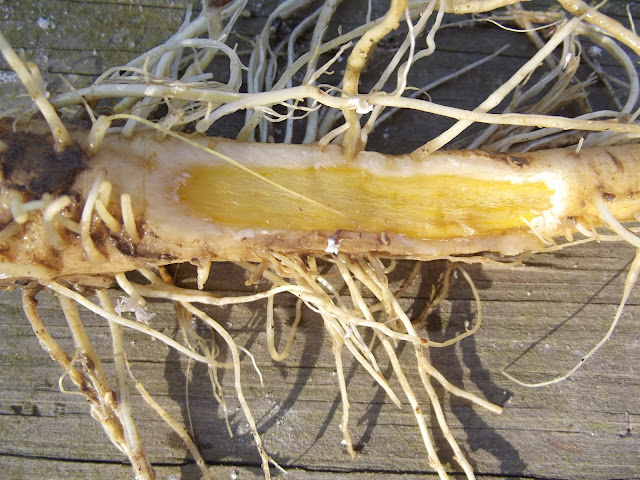Chapter 2 Anatomy of the Root
 |
| Anatomy of the Root |
Most plant roots are composed of five main areas. These parts of the roots are the root tip, epidermis, cortex, xylem and phloem.
The root cap is located at the very tip of the root. It is a thimble shaped structure that serves to protect the root tip, or apical meristem, which is composed of almost continuously growing cells.
 |
| Anatomy of the Root |
The epidermis is the skin of the root, composing its outmost surface. It is a single cell thick in most plants and it serves two functions, to protect the tissues within the root and to allow minerals and water to pass through. Microscopic root hairs grow outward from some of the cells of the epidermis, greatly expanding the surface area of the root and increasing the amount of minerals and roots that may be taken in.
The next layer of the anatomy of a root is the cortex. The parenchyma cells and the endodermis make up the cortex. Parenchyma cells mostly serve as storage structures and these are where excess food produced in the plant's leaves are stored for future use. The endodermis is the innermost layer of the cortex. A waxy substance called the Casparian strip surrounds each cell, forcing minerals to pass through the cells of the endodermis by a process called osmosis, and not around them. This limits the amount of minerals and water passing into the cortex.
The vascular cylinder is the innermost layer of the plant root. It is composed of two structures, the xylem and the phloem. Both layers are composed of tube shaped cells and both have similar functions, the transportation of materials from one area of the plant to another. The xylem is composed of dead, tubular cells called veins, whose purpose is to transport minerals and waters to the stem and then on to the leaves, sort of like a pipe system within the plant root. The cells of the phloem are living cells, also tubular in shape and referred to as sieve tubes. The phloem also acts like a pipeline system, moving food either manufactured in the leaves to for immediate use or stored in the cortex for future use.
The way the system functions is simple in concept. The root hairs take in water and minerals and pass it into the cortex. Pressure builds up, forcing them through the endodermis, into the phloem, and from there up into the stem and outward to the leaves.



